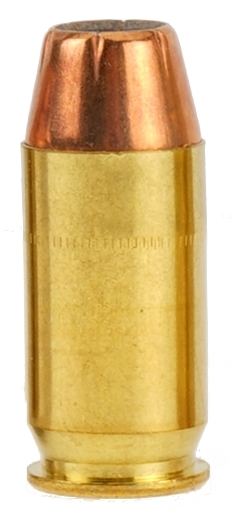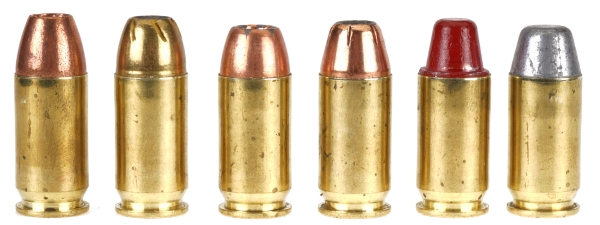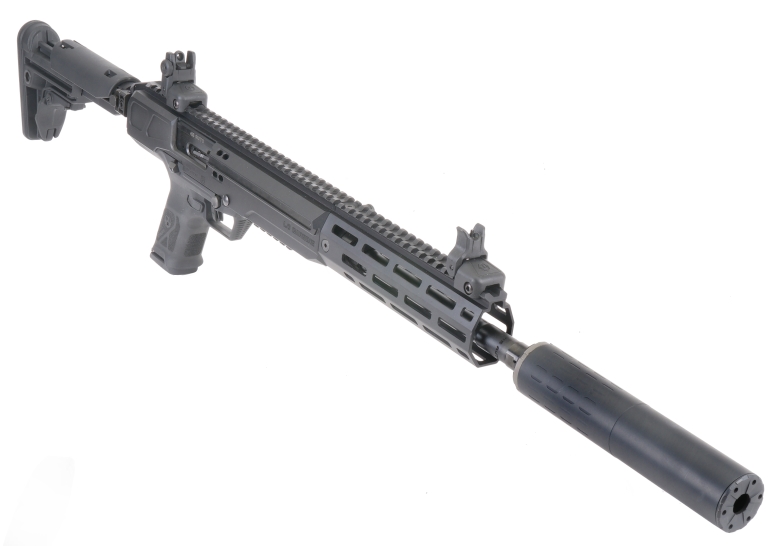Adventures with the 45 Automatic Ruger LC Carbine
o1/28/2024 – The Ruger LC Carbine has a great deal of potential, some sanctioned by Ruger, some not so much. The bolt-over-barrel blow back system is quite adaptable to ammunition, and that 16.25″ barrel is just waiting for something more than fast burning powder charged cartridges that are intended for short handgun barrels.
What follows are two efforts. The first effort reflects handloads assembled to 45 Super pressure levels. Ruger does not approve use of the LC Carbine with 45 Super ammunition, factory or handloads. As 45 Super operating pressure is midway between +P and proof pressure levels, under the best of circumstances, use of this ammunition accelerates wear and tear.
The second effort reflects handloads assembled to 45 Automatic +P pressure levels. Ruger approves the LC Carbine for use with SAAMI standard and +P pressure 45 Automatic factory ammunition.
To pursue this further, at the very least, the recoil spring rate would have to be increased. This may not be a complete solution, as weight might need to be added to the front/rear bolts to adequately slow velocity. For now, 45 Super level ammunition functioned well, causing no feed or cycling problems… other than having to drive to Wisconsin to recover ejected brass.
 45 Automatic variations, with common case exterior dimensions, are generally expressed as 45 Automatic, 45 Automatic +P and 45 Super. Examining examples of each type by sectioning, I have found standard and +P cases to be identical, and 45 Super cases having a slightly thicker internal web construction.
45 Automatic variations, with common case exterior dimensions, are generally expressed as 45 Automatic, 45 Automatic +P and 45 Super. Examining examples of each type by sectioning, I have found standard and +P cases to be identical, and 45 Super cases having a slightly thicker internal web construction.
I have read in social media that 45 Super Starline brass is identical to standard 45 Auto brass. Good to know, but I would rather trust my own eyes and calipers.
Most 45 Auto pistols and revolvers are approved for use with SAAMI listed standard and +P pressure versions. Pictured left… standard pressure, +P and Super versions. Yes, I do know that is a single cartridge photo.
The 45 Super is a non-standard cartridge, operating at pressure levels above the 45 Automatic +P standard. Its use in firearms not specifically approved for its use may require modifications to dampen slide/bolt velocity and better time ejection. All relatively minor tweaks.
Where the 45 Automatic operates at 21 kpsi, the 45 Automatic +P operates at 23 kpsi and the 45 Super operates at approximately 28 kpsi. For the sake of context, +P proof loads are at the 31 kpsi – 33 kpsi level.
What happens when 45 Super ammunition is fired in a 45 Automatic pistol, that has not been modified to accommodate 45 Super level pressure? Accelerated wear and early failure and, possibly, less than reliable function.
Everything noted, so far, applies to a 1911 type semi-automatic pistol. At time of discharge the gun’s breech is locked. How well does the 45 Super function in a non-locking breech, blow back action, like the one found in the 45 Auto LC Carbine? I do not as yet know, so we will all find out, together.
Notes before data…
Barnes bullets – I tried to use the slowest powder to get the longest pressure persistence. In short barrel firearms, faster powders work best so that a greater percentage of powder is burned. The long, low density Barnes bullet appearing on the tables that follow, significantly diminished net case capacity. In doing so, they prevented the use of smokeless powder that would be better suited for the 16.15″ barrel. What is going for them? For environmental warriors, they are not lead.
Most of the powder appearing within the data that follows, is either ball or flake, both which have an affinity for anything in the presence of static electricity. While dryer softener sheets work great on powder reservoirs, they tend to leave a sticky film on scale pans. Spraying pans with Windex, and wiping off with a plain paper towel and allowing the pans to dry makes for a slick, cling free surface.
The first two runs at constructing this data, were accomplished with large pistol primers. Because of the powder types and numerous compressed charges, I switched to large magnum pistol primers. The result was a minimal increase in pressure/velocity, but a much more consistent velocity result.
I have had past problems with heavily compressed charges and magnum primers, where the start pressure begins to drive the bullet out of the crimp before full ignition. The result was uneven or even reduced velocity. None of that happened here, so magnum primers.
Data…
Warning: Bullet selections are specific, and loads are not valid with substitutions of different bullets of the same weight. Variations in bullet length will alter net case capacity, pressure and velocity. Primer selection is specific and primer types are not interchangeable. These are maximum loads in my firearms and may be excessive in others. All loads should be reduced by 5% as a starting point for development where cartridges have greater than 40 grains in capacity and 10% for cartridges with less than 40 grain capacity following safe handloading practices as represented in established mainstream reloading manuals. Presentation of these loads does not constitute a solicitation for their use, nor a recommendation.

Assembled loads, left to right, as they appear, top to bottom, on the tables that follow. Why does the ammo looks so… funky? I attempted to shoot the picture with soft box electronic flash passing through bubble pack, and with the light table turned up, all in an effort to soften the glare. No, it did not work as anticipated.
| Cartridge: 45 Super (Experimental Only) |
|
| Firearm | Ruger LC Carbine |
| Barrel Length | 16.25″ |
| Min – Max Case Length | 0.898″ +0.0″/-0.010″ |
| Min – Max Cartridge Overall Length* | 1.190″ – 1.275″ |
| Primer | CCI 350 Magnum LP Primers |
| Bullet Diameter – Jacketed** |
0.4520″ +0.0″/-0.003″ |
| Reloading Dies | RCBS |
| * Min-Max Cartridge Overall Length Match SWC 1.140″ – 1.255″ ** Bullet Diameter Cast 0.4530″ +0.0″/-0.003″ |
|
| Bullet Type | Bullet Weight Grains |
Net H2O Grains Capacity |
COL” | Powder Type | Powder Charge Grains |
Muzzle Velocity fps |
Muzzle Energy ft/lbs |
| Barnes TAC XB | 185 | 9.4 | 1.265 | AA No.7 | 10.0 |
1158 | 551 |
| Barnes TAC XB | 185 | 9.4 | 1.265 | Alliant Power Pistol | 7.8 |
1277 | 670 |
| Barnes TAC XB | 185 | 9.4 | 1.265 | Hodgdon Long Shot | 8.0 |
1325 | 721 |
| Remington GS | 185 | 18.6 | 1.255 | AA No.9 | 17.5 |
1620 | 1078 |
| Remington GS | 185 | 18.6 | 1.255 | Alliant Blue Dot | 15.0 | 1632 | 1162 |
| Remington GS | 185 | 18.6 | 1.255 | RS Enforcer | 19.0 |
1629 | 1158 |
| Speer Gold Dot | 185 | 16.5 | 1.200 | Alliant Power Pistol | 11.5 | 1533 | 966 |
| Speer Gold Dot | 185 | 16.5 | 1.200 | Alliant Blue Dot |
14.5 |
1665 | 1139 |
| Speer Gold Dot | 185 | 16.5 | 1.200 | RS Enforcer | 18.0 |
1570 | 1013 |
| Hornady HP/XTP | 200 | 15.8 | 1.230 | Power Pistol | 11.0 | 1581 | 1027 |
| Hornady HP/XTP | 200 | 15.8 | 1.230 | Alliant Blue Dot | 13.8 |
1702 | 1110 |
| Hornady HP/XTP | 200 | 15.8 | 1.230 | RS Enforcer | 17.0 | 1446 | 929 |
| Acme Hard Cast SWC | 185 | 15.6 | 1.255 | Alliant Power Pistol | 11.0 | 1633 | 1096 |
| Acme Hard Cast SWC | 185 | 15.6 | 1.255 | Hodgdon Long Shot | 11.0 | 1595 | 1112 |
| Acme Hard Cast SWC | 185 | 15.6 | 1.255 | Hodgdon HS-6 | 11.5 | 1452 | 866 |
| Acme Hard Cast FN | 225 | 12.9 | 1.200 | Alliant Power Pistol | 9.4 |
1362 | 996 |
| Acme Hard Cast FN | 225 | 12.9 | 1.200 | Alliant Blue Dot | 11.7 |
1496 | 1118 |
| Acme Hard Cast FN | 225 | 12.9 | 1.200 | RS Enforcer | 14.5 |
1309 | 856 |

Ammunition loaded during this project carries the appropriate headstamp: 45 Auto, 45 Auto +P and 45 Super. The Super load empties can also be identified by the ejection dings on the side of the fired cases.
Evidence that the LC Carbines recoil spring is too light for routine use with 45 Super can be observed in the distance and trajectory of ejected casings.
Other than dents and distance tossed, the LC Carbine functioned without hesitation, locked open when last round in the magazine was fired as designed, whether being shot suppressed or open. That is quite a velocity boost over standard and +P pressure ammo that, I think, puts it in a different class for hunting.
Maybe Ruger will package a recoil spring/ buffer assembly for standard 45 Automatic and one for 45 Super, or at least offer the latter through ShopRuger.Com? Remember the opening lines to the old Sinatra song, “Young At Heart”?
How much a difference did the 45 Super ammo make?
| Best Zero Results | |||||||
| Near-Zero – yards. | 14 | Mid Range – yards. | 71 | ||||
| Far-Zero – yards. | 120 | Max Ordinate – “ | +3.0 | ||||
| Point Blank – yards. | 127 | ||||||
| Best Zero : Range 0 – 200 yards | ||||||||||||
| Yards | 0 | 50 | 100 | 150 | 200 | |||||||
| Velocity – fps | 1702 | 1429 | 1211 | 1063 | 968 | |||||||
| Energy – ft.-lbs. | 1286 | 906 | 652 | 502 | 416 | |||||||
| Momentum – lbs-sec | 49 | 41 | 35 | 30 | 28 | |||||||
| Path – “ | -1.50 | 2.30 | 1.80 | -4.62 | -18.71 | |||||||
| Drift – “ | 0.00 | 0.00 | 0.00 | 0.00 | 0.00 | |||||||
| Time Of Flight – sec. | 0.00 | 0.10 | 0.21 | 0.34 | 0.49 | |||||||
Compared to a 5″ barrel pistol, that is better than +P muzzle energy, only at 150 yards. Approximately 40 yards were added to point blank range over Hornady +P 200 grain ammo.
Below, the Ruger LC Carbine’s increased barrel length and the use of relatively slow powder gave quite a boost to even +P muzzle velocity.
| 45 Automatic +P |
|
| Firearm | Ruger LC Carbine |
| Barrel Length | 16.25″ |
| Min – Max Case Length | 0.898″ +0.0″/-0.010″ |
| Min – Max Cartridge Overall Length* | 1.190″ – 1.275″ |
| Primer | CCI 350 – Magnum Large Pistol |
| Bullet Diameter – Jacketed** |
0.4520″ +0.0″/-0.003″ |
| Reloading Dies | RCBS |
| * Min-Max Cartridge Overall Length Match SWC 1.140″ – 1.255″ ** Bullet Diameter Cast0.4530″ +0.0″/-0.003″ |
|
| Bullet Type | Bullet Weight Grains |
Net H2O Grains Capacity |
COL” | Powder Type | Powder Charge Grains |
Muzzle Velocity fps |
Muzzle Energy ft/lbs |
| Barnes TAC XB | 185 | 9.4 | 1.265 | AA No.9 | 9.5 | 1113 | 509 |
| Barnes TAC XB | 185 | 9.4 | 1.265 | Alliant Power Pistol | 6.8 | 1184 | 576 |
| Barnes TAC XB | 185 | 9.4 | 1.265 | Hodgdon Long Shot | 6.8 | 1138 | 532 |
| Remington GS | 185 | 18.6 | 1.255 | AA No.9 | 15.5 | 1419 | 827 |
| Remington GS | 185 | 18.6 | 1.255 | Alliant Blue Dot | 13.8 | 1523 | 953 |
| Remington GS | 185 | 18.6 | 1.255 | RS Enforcer | 17.5 | 1506 | 932 |
| Speer Gold Dot | 185 | 16.5 | 1.200 | Alliant Power Pistol | 10.5 | 1575 | 1019 |
| Speer Gold Dot | 185 | 16.5 | 1.200 | Alliant Blue Dot |
13.0 | 1595 | 1045 |
| Speer Gold Dot | 185 | 16.5 | 1.200 | RS Enforcer | 16.5 | 1415 | 823 |
| Hornady HP/XTP | 200 | 15.8 | 1.230 | AA No.9 | 14.4 | 1408 | 881 |
| Hornady HP/XTP | 200 | 15.8 | 1.230 | Power Pistol | 9.8 | 1444 | 926 |
| Hornady HP/XTP | 200 | 15.8 | 1.230 | RS Enforcer | 16.0 | 1378 | 843 |
| Acme Hard Cast SWC | 185 | 15.6 | 1.255 | Alliant Power Pistol | 10.2 | 1533 | 966 |
| Acme Hard Cast SWC | 185 | 15.6 | 1.255 | Alliant Blue Dot | 12.7 | 1498 | 922 |
| Acme Hard Cast SWC | 185 | 15.6 | 1.255 | Hodgdon Long Shot | 10.2 | 1544 | 1044 |
| Acme Hard Cast FN | 225 | 12.9 | 1.200 | Alliant Power Pistol | 8.0 | 1245 | 775 |
| Acme Hard Cast FN | 225 | 12.9 | 1.200 | Alliant Blue Dot |
10.0 | 1293 | 835 |
| Acme Hard Cast FN | 225 | 12.9 | 1.200 | RS Enforcer | 13.2 | 1214 | 737 |
Wrap up…
I do not want to get caught up in my handloading enthusiasm and miss the point of the Ruger LC Carbine. With factory 45 Automatic standard and +P ammunition, the carbine is an excellent performer. It increases the cartridge’s performance over a handgun to a major degree, extending its suitability for more applications.
In addition to the 16.25″ barrel being a power adder, the carbine adds magazine capacity, and the carbine’s long sight radius contributes to a shooter’s accuracy. Recoil is very light, and the firearm is light, making it something easy to carry.
Accuracy. Without winter storm gusting winds, and temperatures closer to thirty, both the LC Carbine and I improved over Part 1… with the addition of a scope and sandbag rest. Five shot, 50 yard groups ranged from 1.1″ to 1.8″ with factory and +P handloaded ammunition. I think that is good accuracy, especially because that was without cherry picking ammunition, or handloading with the primary goal of accuracy. Nice little carbine.



I can see this OR the S&W Response carbine in my armory soon ( if for no reason other than to p–s off a certain group of people & add too the numbers ! ) as these are ammo/calibers already loaded in great quantity here . I’m intrigued w/ PCC’s .
Yes, they are interesting and quite practical.